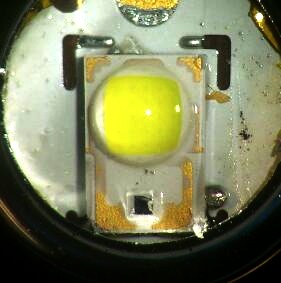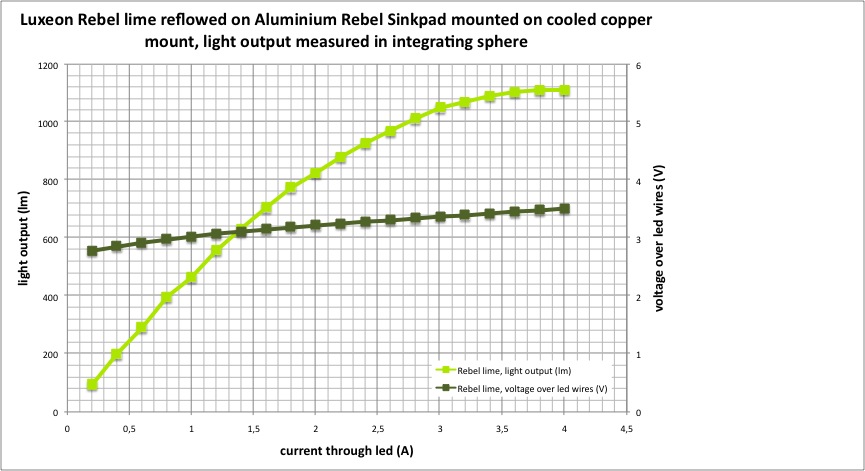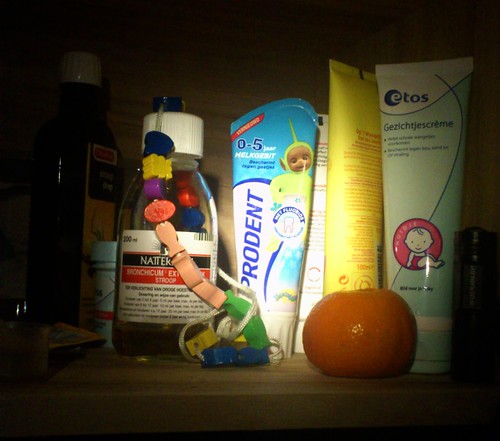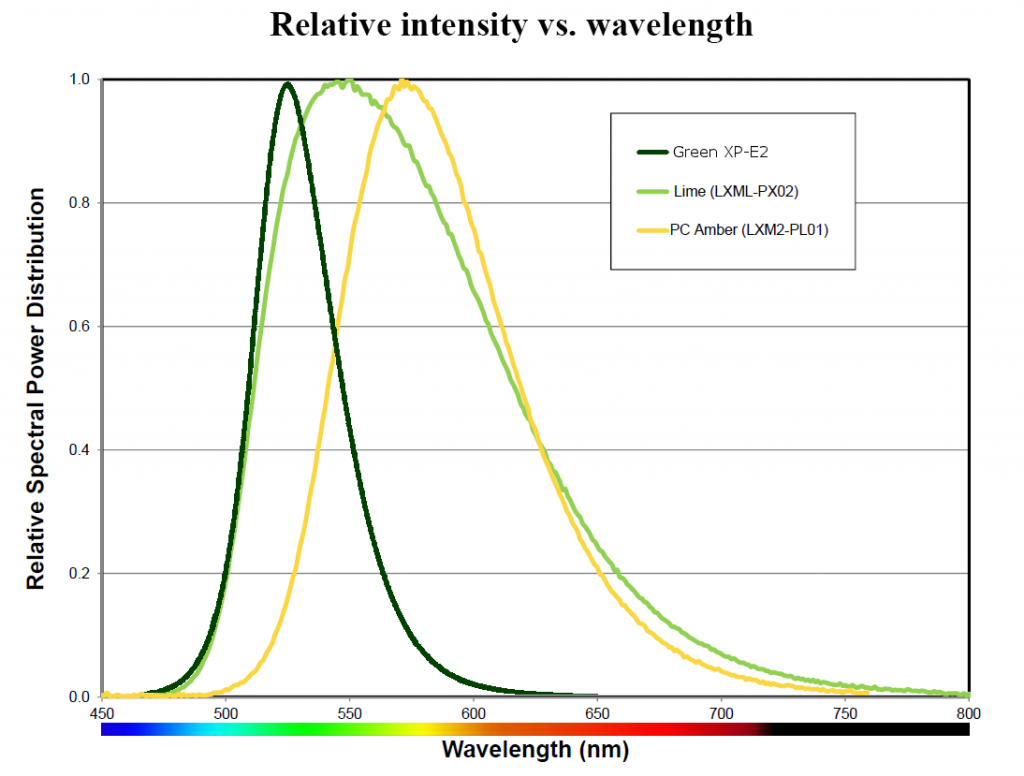Four emitters were tested on direct-thermal-path MCPCB's, three white 3535 leds of comparable die size, and the new Rebel in the colour lime. Current, voltage and light output was measured using a laboratory power supply, a cooled copper mount and a home made integrating sphere (the set-up was as described in my XP-L tests):
A Cree XP-E2 R3 1D, obtained from illumn.com
A chinese 3535 size (XP footprint) cool white led branded 'JR' obtained from dx.com
A Nichia 219B 5700K led with a smaller xpe-size die, obtained from kaidomain.com
A Luxeon Rebel lime, obtained from domeanima.pt.




Unfortunately 2 out of four are currently unavailable from where I bought them, the JR led has simply disappeared from the dx.site (don't worry about that, the tint was a horrible angry blue white), the small die Nichia 219B is sold out at Kaidomain. But these tests do give an insight into some leds other than the (for flashlights) so common Cree.
First the three small die white leds. I tested an XP-E2 R3 1D before, but with a bit different set-up, so I included a new one in this test series for fair comparison.

*The XP-E2 measured a bit different from the last one I tested, the maximum output is a tiny bit higher, but the maximum output is reached at 2.1A now, with the other XP-E2 I tested that was 2.6A. I really wonder if more is the matter except that it was a different emitter (but from the same batch of four that I bought more than half a year ago). RaceR86 recently showed that there is at least a good variety in led voltages in equally spec'ed XM-L2's.
*The JR led is clearly the worst performer, the output is a bit less than the XP-E2, and also the Vf increases much faster with increasing current. You can direct drive it on a li-ion though no problem, freshly charged it will settle at about 2A.
*The Nichia performs very well compared to the XP-E2, although with a higher Vf. But there are two reasons why it still may not beat the XP-E2 as a high-surface-brightness-extreme-throw emitter: 1) the die is slightly larger than the XP-E2 (it does not look like that on the picture but the dome is shallower so optically the die sizes look equal), 2) Nichia's are a pain to dedome. I might have a go at dedoming and see how it performs. This small die 219B does also come in 90CRI btw, like its bigger die brother, and that would be a great small light emitter. I have not seen this 90CRI version for sale yet though.
The last tested emitter is the Luxeon Rebel in the new lime colour. This led is not a single colour led, like most colour leds, but is a phosfor-converted led ('PC-lime'). It uses a blue photon pump with a phosfor layer on top, like any white led. Looking at the spectrum through a grating it looks like even that the underlying led is a violet 405nm emitter btw, but that might be not true, have to look that up. Anyway, it is supposed to be a super-efficient led with a pretty broad spectrum going from cyan to red, but with a maximum output at ~560nm (not my graph):

Here is what measured:

The lime spectrum is pretty much in the range where the luxmeter in my integrating sphere gives almost correct lux-values, so the lumens will not be too far off. And it performs very well indeed, with 1100 lumen at 3.5A with a great low Vf it beats the XP-G2 (but not the XM-L2). The die size is a bit larger than the XP-G2, but it should make for a descent thrower emitter.
I had a C8 doing nothing so with some usual trouble I put the Rebel into it. Not greatly centered, but the beam was ok. Note that in the pictures the lime colour looks more like green, but in reality the colour is a beautiful lime :-)

I measured (NCR18650B, 2.85A tail current -no switch- on a Qlite RevA, but stock switch) 750 lumen OTF of the flashlight, with 38 klux at 1 meter throw :-) With some fine-tuning it could even be a bit better.
I doubt that dedoming (if at all succesful with Rebel leds) would yield a bigger throw, because in white leds the improved surface brightness of a dedomed led is caused by recycling of blue light that in second instance is converted by the phosfor, and in the lime Rebel all blue light is already converted by the phosfor in the first place.
Some pictures to show that the lime Rebel not only shows up the greens, but also some yellow and red, and even a bit towards the blues (again, on the photographs the lime looks more green than lime), the comparison light is a 3500K 80CRI Cree:




This is a fun flashlight :-) , possibly the only lime thrower flashlight in the world ?
Thanks for reading!
